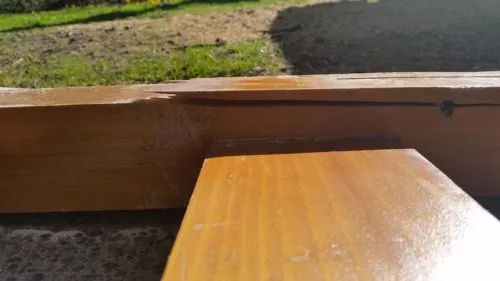Wood is a durable yet natural material that can develop cracks, holes, or imperfections over time. Whether you’re restoring antique furniture, fixing wooden floors, or repairing outdoor decking, using a high-quality wood filler ensures a smooth, long-lasting finish. In this guide, we’ll explore how to choose, apply, and maintain wood filler for professional results.
Why Use Wood Filler?
Wood filler is an essential product for:
- Sealing Cracks and Holes – Fills small gaps, nail holes, and deep cracks in wooden surfaces.
- Creating a Smooth Finish – Helps level uneven surfaces before painting or staining.
- Strengthening Weak Areas – Prevents further damage caused by moisture, insects, and wear.
- Enhancing Outdoor Durability – Protects wooden structures from rain, sun, and extreme weather conditions.
Types of Wood Fillers and Their Applications
Not all wood fillers are the same. Here’s a breakdown of different types and when to use them:
1. Interior vs. Exterior Wood Filler
- Interior wood filler – Ideal for furniture, doors, skirting boards, and indoor wooden surfaces.
- Exterior wood filler – Designed to withstand outdoor conditions, preventing cracking and water damage.
2. Wood Filler for Large Holes vs. Small Repairs
- Wood filler for large holes – Thick, structural-grade fillers provide strength for deep cracks.
- Flexible wood filler – Expands and contracts with wood movement, preventing future cracks.
3. Paintable and Stainable Wood Fillers
- Some fillers can be sanded, painted, or stained to blend seamlessly with the wood grain.
How to Apply Wood Filler for the Best Results
Step 1: Preparing the Surface
- Clean the area by removing dirt, dust, or loose wood particles.
- Sand rough edges to ensure the filler adheres properly.
Step 2: Applying the Wood Filler
- Use a putty knife to press the filler into the hole or crack.
- Smooth out excess filler to avoid over-application.
- Allow it to dry completely according to the manufacturer’s instructions.
Step 3: Finishing Touches
- For outdoor repairs, use a high-quality outdoor wood filler that resists moisture.
- For painted surfaces, choose a paintable filler to match your project.
- For staining, select a filler that blends well with the natural wood grain.
Common Mistakes to Avoid
- Skipping Sanding – Leads to uneven surfaces and visible patches after painting.
- Overfilling Deep Cracks in One Layer – Apply in thin layers for better adhesion.
- Using Indoor Fillers for Outdoor Projects – Can cause peeling, cracking, or water damage.
Where to Buy High-Quality Wood Fillers?
For durable and professional-grade wood filler in Ireland, visit Paintlab.ie. They offer a wide selection of flexible wood fillers and exterior wood fillers for all types of wood repairs.
Explore their full selection here: Paintlab.ie.







